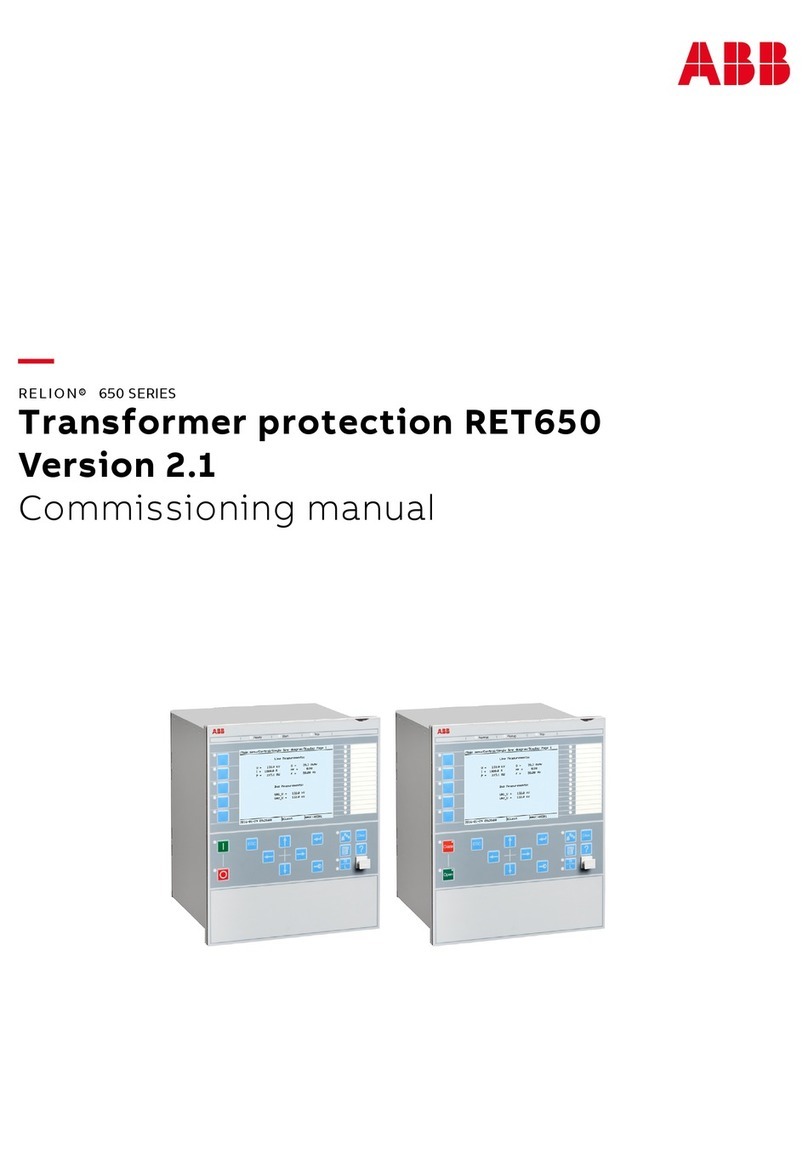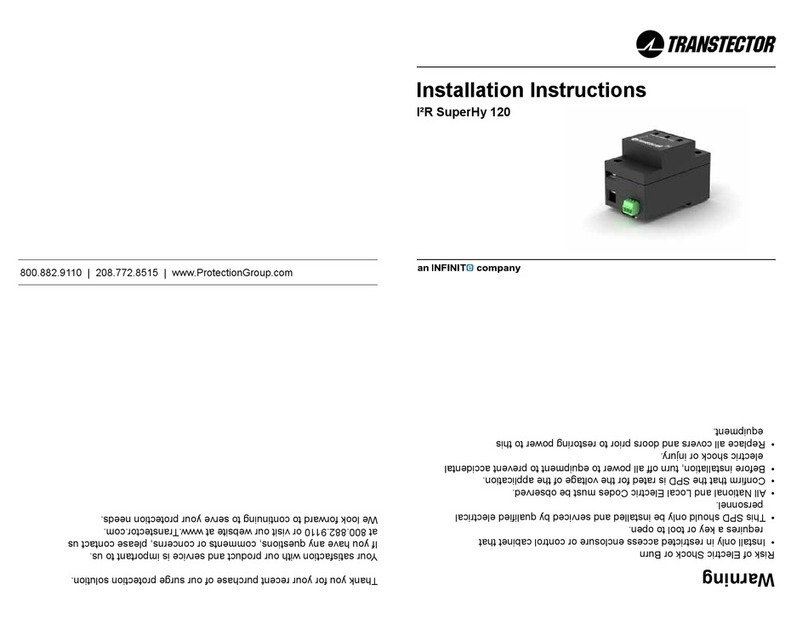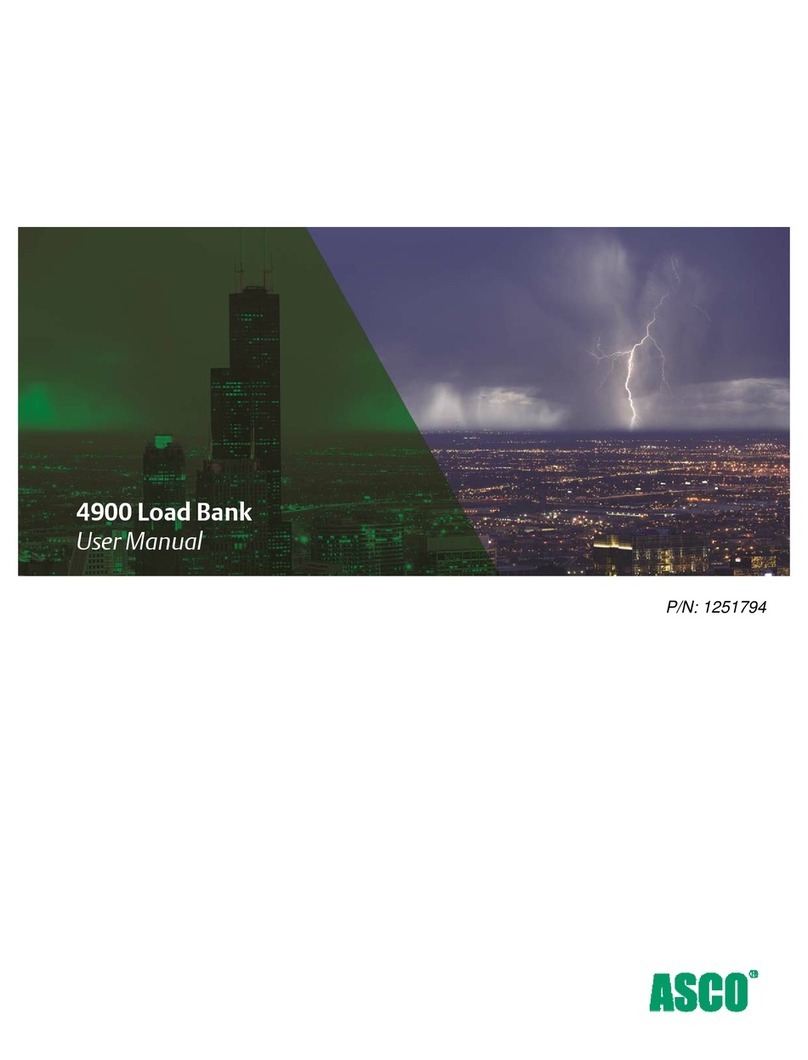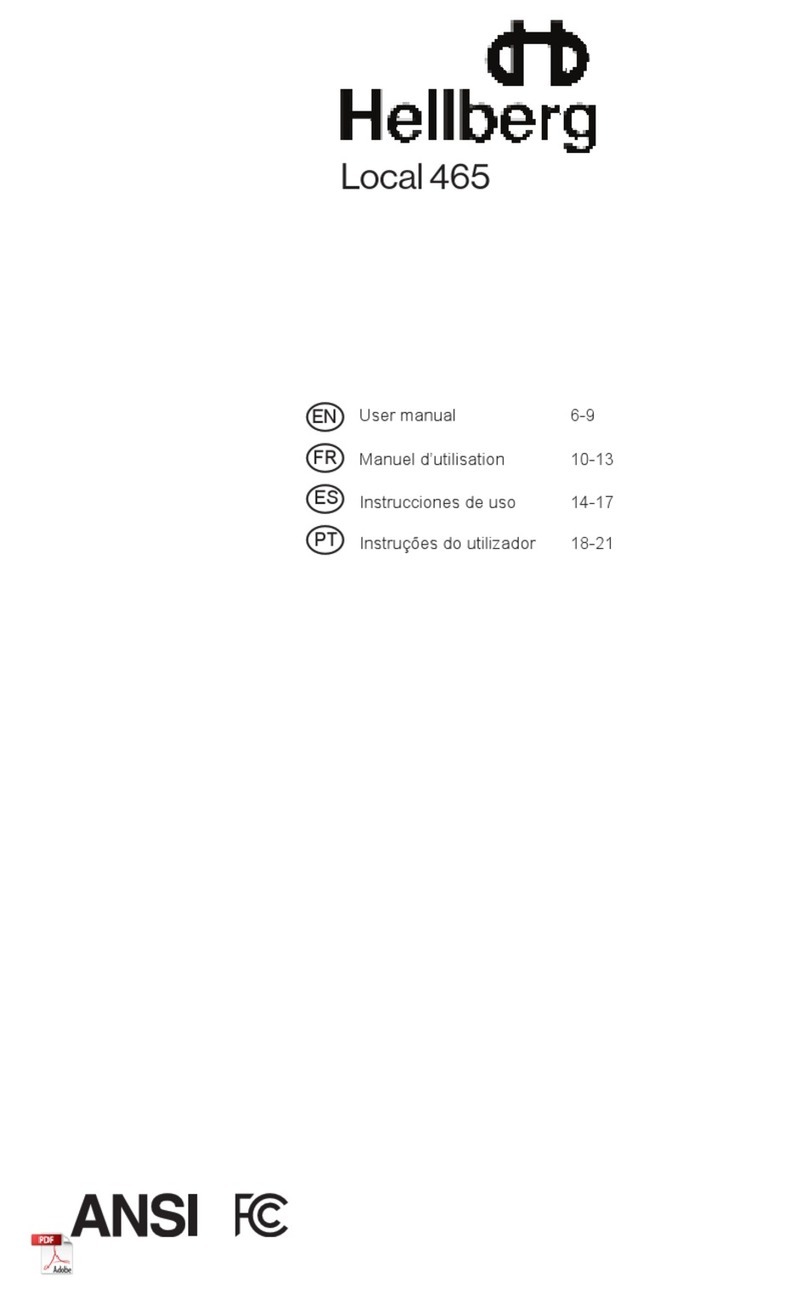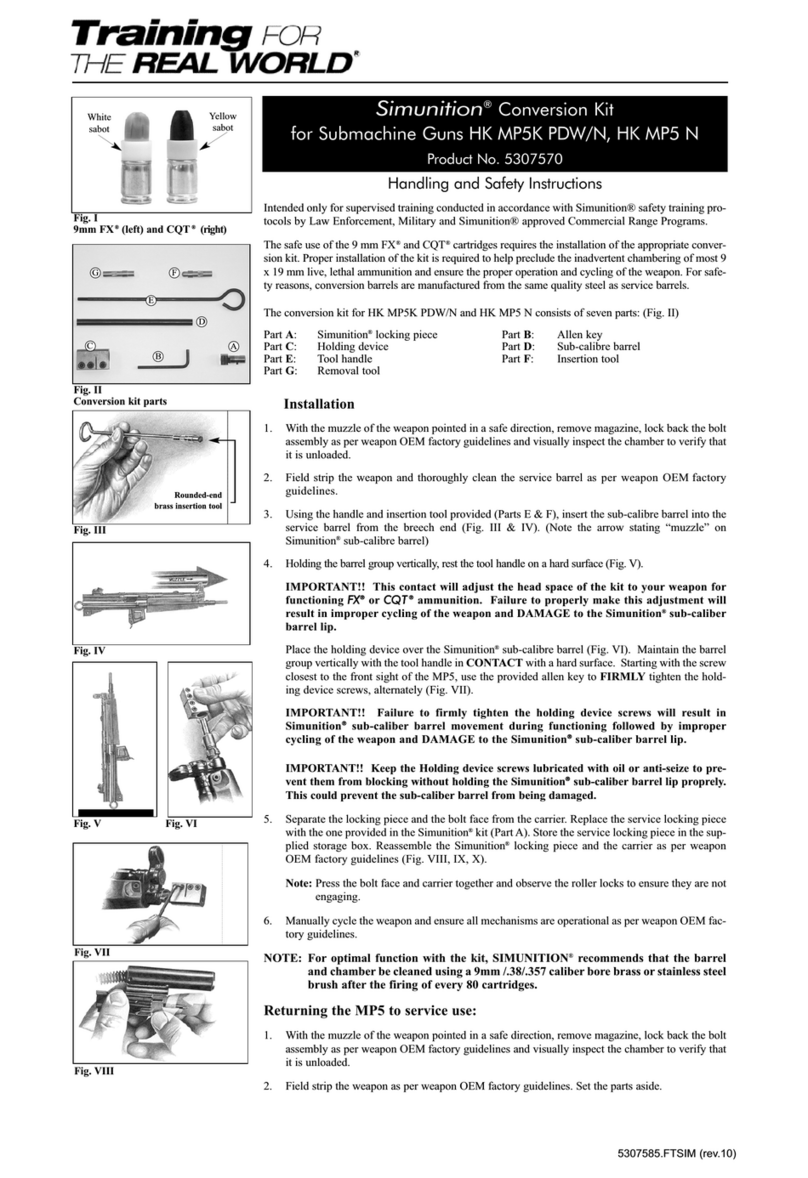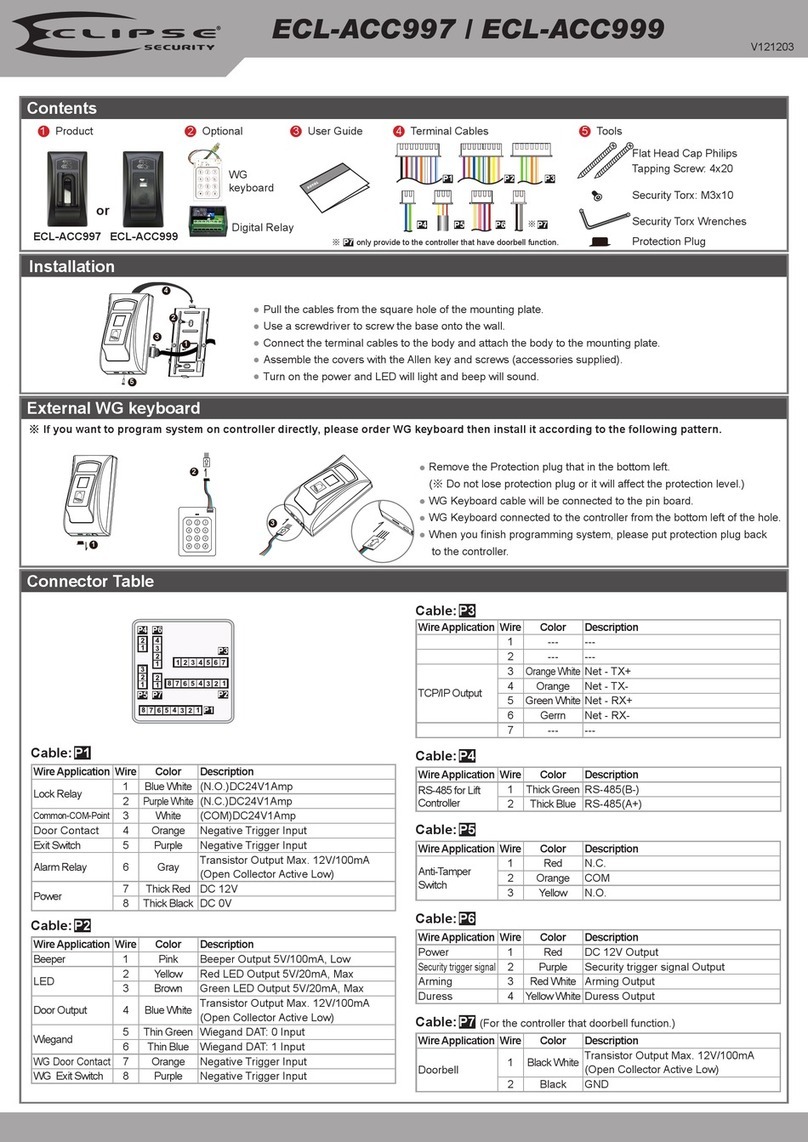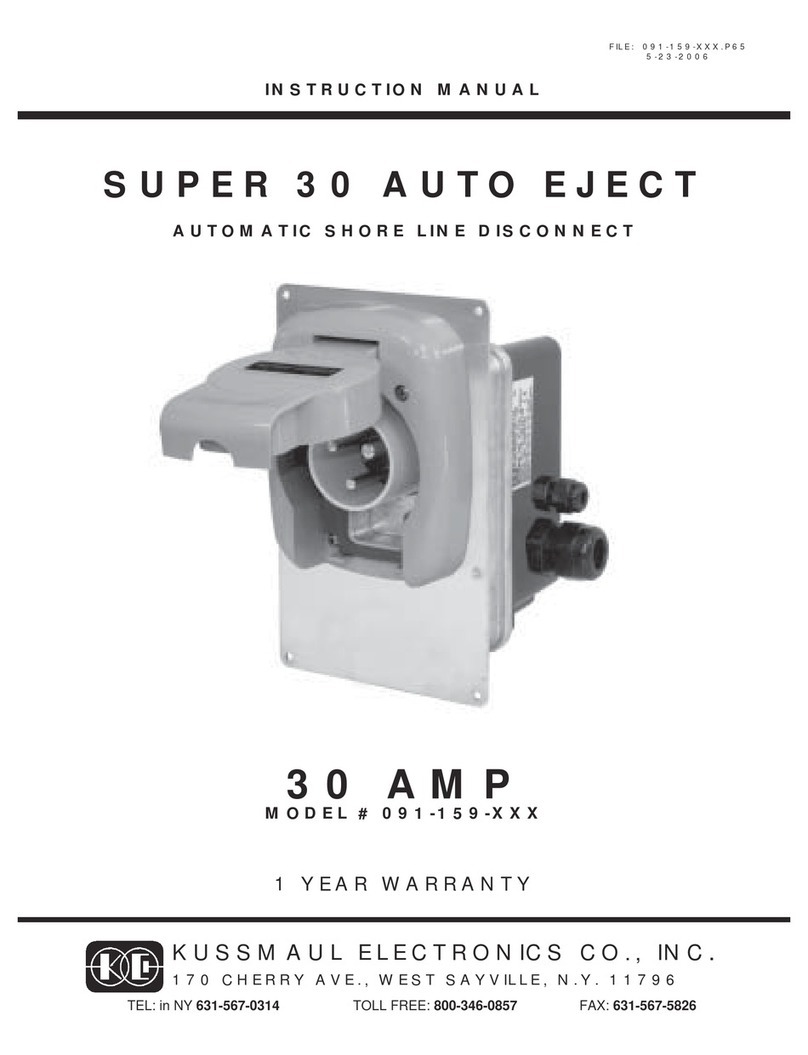TELE RE-NA003 User manual

Subject to modifications and errors Page 1 of 71 2019-06-26 edition
Grid and System
Protection
RE - NA003
Part no.: 2700000I
USERS GUIDE
for SW: 01.05.01i

Subject to modifications and errors Page 2 of 71 2019-06-26 edition
Table of content
1Safety ......................................................................................................................................................................5
1.1 Intended use.................................................................................................................................................5
1.2 Safety advice.................................................................................................................................................5
1.3 Qualified electrician.....................................................................................................................................6
2Installation and connection .................................................................................................................................6
2.1 Dimensions and operating elements ........................................................................................................6
2.2 Back-up fuse of the supply voltage............................................................................................................6
2.3 Terminal allocation ......................................................................................................................................7
2.4 Installation on top-hat rail according to EN 60715 ..................................................................................7
2.5 Circuit diagram 1..........................................................................................................................................8
2.6 Circuit diagram 2 (CEI 0-21).........................................................................................................................9
3Function................................................................................................................................................................10
3.1 Features ......................................................................................................................................................10
3.2 Functional description...............................................................................................................................10
3.2.1 Innovations with regard to VDE-AR-N 4105........................................................................................11
3.3 Overview of the implemented configurations........................................................................................12
3.3.1 CEI 0-21 ...................................................................................................................................................12
3.3.2 VDE 0126.................................................................................................................................................12
3.3.3 VDE-AR-N 4105 (Pn ≤50 kW) ................................................................................................................12
3.3.4 VDE-AR-N 4105 (Pn > 50 kW) ................................................................................................................12
3.3.5 VDE-AR-N 4105 (inverter)......................................................................................................................13
3.3.6 VDE-AR-N 4110 (tested according to TR3, evaluation report TR8)...................................................13
3.3.7 G99/1/3 LV (low voltage).......................................................................................................................13
3.3.8 G99/1/3 HV (medium/high voltage).....................................................................................................13
3.3.9 G98/1/2...................................................................................................................................................13
3.3.10 C10-11 LV (low voltage).........................................................................................................................14
3.3.11 C10-11 MV (medium voltage)...............................................................................................................14
3.3.12 E 8001/8101............................................................................................................................................14
3.3.13 EN 50438.................................................................................................................................................14
3.3.14 EN50438 (DK) .........................................................................................................................................14
3.3.15 NRS 097-2-1: 2017 .................................................................................................................................15
3.3.16 OPEN SETUP...........................................................................................................................................15
3.4 Comparators...............................................................................................................................................15
3.4.1 Voltage monitoring................................................................................................................................16
3.4.2 Frequency monitoring ..........................................................................................................................16
3.4.3 Phase shift monitoring..........................................................................................................................17
3.5 Configuration..............................................................................................................................................17
3.6 Other Parameter ........................................................................................................................................18
3.6.1 Feedback contact...................................................................................................................................18

Subject to modifications and errors Page 3 of 71 2019-06-26 edition
3.6.2 Turn-on delay.........................................................................................................................................19
3.6.3 Random turn-on delay..........................................................................................................................19
3.6.4 Connection Mode ..................................................................................................................................20
3.6.5 Nominal Voltage ....................................................................................................................................21
3.6.6 Functional Safety ...................................................................................................................................21
3.6.7 Operational Mode .................................................................................................................................22
3.7 Settings of the implemented configurations..........................................................................................23
3.7.1 CEI 0-21 ...................................................................................................................................................24
3.7.2 VDE 0126.................................................................................................................................................27
3.7.3 VDE-AR-N 4105 (Pn ≤50kW) .................................................................................................................29
3.7.4 VDE-AR-N 4105 (Pn >50kW) .................................................................................................................31
3.7.5 VDE-AR-N 4105 (Converter)..................................................................................................................33
3.7.6 VDE-AR-N 4110 (tested according to TR3, evaluation report TR8)...................................................35
3.7.7 G99/1/3 LV (low voltage).......................................................................................................................37
3.7.8 G99/1/3 HV (medium/high voltage).....................................................................................................39
3.7.9 G98/1/2...................................................................................................................................................41
3.7.10 C10-11 LV (low voltage).........................................................................................................................43
3.7.11 C10-11 MV (medium voltage)...............................................................................................................45
3.7.12 E 8001/8101............................................................................................................................................47
3.7.13 EN 50438.................................................................................................................................................50
3.7.14 EN50438 (DK) .........................................................................................................................................52
3.7.15 NRS097-2-1 2017 ...................................................................................................................................54
3.7.16 OPEN SETUP...........................................................................................................................................57
3.8 Loss Of Mains detection............................................................................................................................61
3.8.1 Loss Of Mains detection via voltage measurement ..........................................................................61
3.8.2 Loss Of Mains detection via RoCoF .....................................................................................................61
3.8.3 Loss Of Mains detection via vector shift.............................................................................................61
3.9 Test function...............................................................................................................................................61
3.10 Digital inputs...............................................................................................................................................61
3.11 Output contacts..........................................................................................................................................61
3.12 Error.............................................................................................................................................................61
3.12.1 Measurement error...............................................................................................................................62
3.12.2 System error...........................................................................................................................................62
3.12.3 Error memory (LOG)..............................................................................................................................62
4Technical data......................................................................................................................................................63
4.1 Supply circuit ..............................................................................................................................................63
4.2 Measuring circuit........................................................................................................................................63
4.3 Measuring ranges ......................................................................................................................................63
4.4 Digital inputs...............................................................................................................................................63
4.5 Output circuit..............................................................................................................................................64
4.6 Accuracy ......................................................................................................................................................64

Subject to modifications and errors Page 4 of 71 2019-06-26 edition
4.7 Insulation data............................................................................................................................................64
4.8 Environmental conditions.........................................................................................................................64
4.9 Electrical connection..................................................................................................................................65
4.10 Sealing wire.................................................................................................................................................65
4.11 Protection class ..........................................................................................................................................65
5Operation and commissioning ..........................................................................................................................66
5.1 Initial commissioning.................................................................................................................................66
5.2 Menu navigation ........................................................................................................................................66
5.2.1 Level 0 .....................................................................................................................................................66
5.2.2 Level 1 .....................................................................................................................................................66
5.2.3 Level 2 .....................................................................................................................................................67
5.2.4 Level 3 .....................................................................................................................................................67
5.2.5 Level 4 .....................................................................................................................................................67
5.2.6 Level 5 .....................................................................................................................................................67
5.3 Menu structure...........................................................................................................................................69
5.4 Applicable rules and standards................................................................................................................70
5.5 Lead seal .....................................................................................................................................................71

Subject to modifications and errors Page 5 of 71 2019-06-26 edition
1Safety
Caution! Never work when voltage is applied.
This poses a life-threatening risk! Never use the device if there is obvious
damage! Use only by trained specialist personnel!
1.1 Intended use
The TELE NA003 serves as grid and system protection for supplying cogeneration units, wind power stations,
hydroelectric power plants, and photovoltaic systems.
In the event of a power failure or a fault in the grid of the energy supply company, private small power
plants must immediately be isolated from the public grid to prevent accidental infeed. For one, maintenance
personnel could be endangered without immediate grid separation, and secondly, consumers could be
exposed to impermissible voltages and frequencies.
In case the grid operator requires threshold values that deviate from the standards, it is possible in part to
set some of the threshold values outside of the standard defined range.
Outside of this range the device is no longer in compliance with standards and the corresponding
certificates lose their validity. This status is shown on the display by the identifier "ncnf." Settings outside of
this range are therefore within the operator's scope of responsibility and/or the acceptance authority of the
system.
1.2 Safety advice
This device was built and tested in accordance with recognized technical safety regulations. However,
incorrect use can still result in danger for both persons and machine.
Only use this device as intended, in a technical safe condition, and in compliance with the applicable rules
and regulations for accident prevention valid at the usage location.
•Fix all faults that could impair the safety immediately.
•Do not make any unauthorized changes and only use spare parts and additional devices that are
sold or expressly recommended by the manufacturer of the device.
•The device may no longer be used in case of obvious damage.
•Country-specific standards and guidelines are to be observed.
•The NA003 can be protected against authorized changes after commissioning via password
protection or sealing. One of the protection mechanisms named above must be applied if this is
required in the respective country-specific standard or guidelines.

Subject to modifications and errors Page 6 of 71 2019-06-26 edition
1.3 Qualified electrician
A qualified electrician can independently recognize and prevent dangers from electricity. Requirements for
this are:
•Knowledge of electrical engineering
•Experience in electrical work
•Knowledge and work experience with the corresponding system or similar systems (system type)
•Knowledge of the hazards and countermeasures
•The ability to recognize whether safety is provided during the performance of work
Qualified electricians are specially trained and know the relevant standards and regulations for the work
environment in which they are active. The regulations of the corresponding country apply.
2Installation and connection
2.1 Dimensions and operating elements
Legend
Labeling
Type
Function
1
R1, R2, R3
LED (yellow)
Output relay status display
2
ENT
Button
ENTER, input confirmation, next level
3
ESC
Button
ESCAPE, input rejection, back a level, Test
4
-
Button
Parameter setting, display change
5
+
Button
Parameter setting, display change
6
PROG
Button (can be sealed)
PROGRAM, programming
7
LCD-display 4x20 characters
Display
2.2 Back-up fuse of the supply voltage
The supply and measuring voltages of all system components are to be secured with back-up fuses. The
back-up fuses are to be dimensioned according to the conductor cross-section used.
We recommend securing the output relay against the danger of short-circuit with a 5A fast acting fuse!

Subject to modifications and errors Page 7 of 71 2019-06-26 edition
2.3 Terminal allocation
A1, A2
Supply circuit
DC: 24V
AC: 110 - 230V
A1: L (+)
A2: N (-)
L1, L2, L3, N Measuring circuit U
N
: 3x400V AC
11, 12, 14
Output relay channel A (changeover
contact)
Status display through yellow LED
R1
Isolated
11: Root
12: normally opened
14: normally closed
21, 22, 24
Output relay channel B (changeover
contact)
Status display through yellow LED
R2
Isolated
21: Root
22: normally opened
24: normally closed
31, 32, 34
Output relay channel D (changeover
contact)
Status display through yellow LED
R3
Isolated
31: Root
32: normally opened
34: normally closed
I1, ┴
Digital input 1
(feedback contact of contactor A)
Isolated (24V/5mA)
Input active: I1 and ┴connected
I2, ┴
Digital input 2
(feedback contact of contactor B)
Isolated (24V/5mA)
Input active: I2 and ┴connected
Not applicable for all country-specific standards in
which no functional safety is required!
I3,
┴
Digital input 3
(remote shutdown)
Isolated (24V/5mA)
Input active: I3 and ┴connected
I4, I5, ┴
Digital input 4 and 5
(parameter switchover)
For CEI 0-21
Isolated (24V/5mA)
Input active: I4 resp. I5 and ┴connected
2.4 Installation on top-hat rail according to EN 60715
Latch the mounting clip on the reverse of the device to the top-hat rail so that a safe and secure fit is
ensured.

Subject to modifications and errors Page 8 of 71 2019-06-26 edition
2.5 Circuit diagram 1
VDE V 0126-1-1
ÖNorm E 8001-4-712 / E 8101-4-712
EN50438
NRS 097-2-1:2017
VDE-AR-N 4105:2018-11 (Pn ≤50 kW) *1, *4
VDE-AR-N 4105:2018-11 (Pn >50 kW) *1, *4
VDE-AR-N 4105:2018-11 (Inverter) *4
VDE-AR-N 4110:2018-11 *1
G99-1-3 LV *1
G99-1-3 HV *1
G98-1-2 *1
C10-11 LV *1
C10-11 MV *1
EN50438 (DK) *3
OPEN SETUP *3
*1… Contactor B not applicable for all country-specific standards in which no functional safety is required!
*2… Auxiliary contact as normally opened, normally closed, or can be configured "not monitored”.
*3… 1- or 2-channel connection possible and can be configured.
*4 … Evaluation, contact error for autogeneration plants only for VDE-AR-N 4105:2018-11

Subject to modifications and errors Page 9 of 71 2019-06-26 edition
2.6 Circuit diagram 2 (CEI 0-21)
CEI 0-21
*1Parameter switching:
definitive mode (Operational mode 0):
I4 inactiv / contact open: overfrequency 1, underfrequency 1
I4 activ / contact closed: overfrequency 2, underfrequency 2
transitory mode (Operational mode 1):
I5 active / contact closed: overfrequency 2, underfrequency 2
I5 inactive / contact open: overfrequency 3, underfrequency 3
*2Auxiliary contact as normally opened, normally closed, or can be configured "not monitored”

Subject to modifications and errors Page 10 of 71 2019-06-26 edition
3Function
3.1 Features
•Simple implementing through pre-defined setups for country-specific standards and guidelines
with parameters that can be set within a wide range.
•Wide nominal voltage and nominal frequency range, configurable nominal voltage
•Additional "Open setup" for free, practically unlimited parametrization in the field
•Single-fault tolerance
•Cyclical self-test
•Monitoring of the connected section switch
•Remote shutdown
•Loss of mains detection (RoCoF, PShift, phase voltage)
•Software update option in the field
•Upgradable communication interface
•Test function with the determination of the turn-off time
•Monitoring of 1- and 3- phase grids for low and medium voltage grids
•Error memory with time stamp (50 entries)
•Password protection and ability to seal
•Random turn-off thresholds and turn-on times for non-controllable energy producers (e.g. CHP)
3.2 Functional description
Depending on the configuration selected, the device can handle several monitoring functions at the same
time.
After exceeding a threshold value, the device switches off after a turn-off delay that is defined especially for
each threshold value. When the test function or the remote shutdown is activated, the device switches off
immediately. Only once all monitored parameters are within the permissible limits and the remote
shutdown deactivated does the device switch back on after a defined turn-on time.
If not specified otherwise, the nominal voltage is 230 V / 400 V and the nominal frequency 50 Hz.

Subject to modifications and errors Page 11 of 71 2019-06-26 edition
3.2.1 Innovations with regard to VDE-AR-N 4105
For the 3 new parameter sets of VDE-AR-N 4105 (3.3.3-5), the following applies for the commissioning:
When commissioning, make sure that only one coupling switch (on R1) is used. 3.3.5. for inverters is an
exception here - 2 coupling switches (on R1 and R2) must still be used.
Furthermore, the feedback contact(s) must be connected to the digital inputs I1(2)- ┴provided for this
purpose. Finally, parameter 3.099 determines whether the feedback contact(s) are normally closed (n.c.) or
normally open (n.o.).
An Error C (Contact) appears on the display if this has not been taken into account. NA003 must not switch
on the output relays R1(2) for VDE-AR-N 4105 during error C as long as the feedback contacts are not
correctly connected and parameterized.
Contact Error-Reset:
If UN3x400V AC is correctly connected, a reset can only be carried out by pressing the Esc (level 1.010) or Ent
(level 1.050) key. The contact error is then cleared and the output relays R1/2) energize after the switch-on
time has elapsed.
An existing contact error can also be reported to the generation system via R3.
In this context, we would like to refer to Chapter 3.9 Test function (Determination of the tripping time of the
coupling switch).
Password protection:
With regard to VDE-AR-N 4105, the devices are supplied with fixed password protection. The password is
"4105". The commissioning engineer is requested to change the password immediately for safety reasons
(see 5.2.5).

Subject to modifications and errors Page 12 of 71 2019-06-26 edition
3.3 Overview of the implemented configurations
3.3.1 CEI 0-21
•Selectable connection mode (1-phase, 3-phase)
•Selectable operational mode (transitory mode / definitive mode)
•Selectable feedback contact (normally opened/normally closed)
•1 overvoltage threshold - phase to phase voltage (automatic selection depending on connection
mode)
•2 undervoltage thresholds - phase to phase voltage (automatic selection depending on connection
mode)
•1 overvoltage threshold - phase-to-neutral voltage (automatic selection depending on connection
mode)
•2 undervoltage threshold - phase-to-neutral voltage (automatic selection depending on connection
mode)
•10 minutes average overvoltage threshold
•3 switchable over-frequency thresholds (switchover via operational mode and digital inputs)
•3 switchable under-frequency thresholds (switchover via operational mode and digital inputs)
•Turn-on delay
3.3.2 VDE 0126
•Selectable feedback contact (normally opened/normally closed)
•1 Overvoltage threshold - phase to phase voltage
•1 Undervoltage threshold - phase to phase voltage
•1 Overvoltage threshold - phase-to-neutral voltage
•1 Undervoltage threshold - phase-to-neutral voltage
•10 minutes average overvoltage threshold
•1 Overfrequency threshold
•1 Underfrequency threshold
•1 Random over-frequency threshold (can be activated if required)
•Turn-on delay
•Random turn-on delay (can be activated if required)
3.3.3 VDE-AR-N 4105 (Pn ≤50 kW)
•Selectable feedback contact (normally closed / normally open)
•1 Overvoltage threshold - phase to phase voltage
•1 Undervoltage threshold - phase to phase voltage
•1 Overvoltage threshold - phase-to-neutral voltage
•1 Undervoltage threshold - phase-to-neutral voltage
•10-minute average Overvoltage threshold
•1 Overfrequency threshold
•1 Underfrequency threshold
•1 random over-frequency threshold (can be activated if required)
•switch-on delay
•random switch-on delay (can be activated if required)
3.3.4 VDE-AR-N 4105 (Pn > 50 kW)
•Selectable feedback contact (normally closed / normally open)
•-1 Overvoltage threshold - phase to phase voltage
•2 undervoltage thresholds - phase to phase voltage
•1 Overvoltage threshold - phase-to-neutral voltage
•2 undervoltage thresholds - phase-to-neutral voltage
•10-minute average Overvoltage threshold
•1 Overfrequency threshold
•1 Underfrequency threshold
•1 random over-frequency threshold (can be activated if required)
•switch-on delay
•random switch-on delay (can be activated if required)

Subject to modifications and errors Page 13 of 71 2019-06-26 edition
3.3.5 VDE-AR-N 4105 (inverter)
•Selectable feedback contact (normally closed / normally open)
•1 Overvoltage threshold - phase to phase voltage
•2 undervoltage thresholds - phase to phase voltage
•1 Overvoltage threshold - phase-to-neutral voltage
•2 undervoltage thresholds - phase-to-neutral voltage
•10-minute average Overvoltage threshold
•1 Overfrequency threshold
•1 Underfrequency threshold
•1 random over-frequency threshold (can be activated if required)
•switch-on delay
•random switch-on delay (can be activated if required)
3.3.6 VDE-AR-N 4110 (tested according to TR3, evaluation report TR8)
•Selectable connection mode (1 phase, 3 phase)
•Selectable nominal voltage
•Selectable feedback contact (normally closed / normally open)
•2 Overvoltage thresholds - phase to phase voltage (automatic selection depending on Connection
Mode)
•2 undervoltage thresholds - phase to phase voltage (automatic selection depending on Connection
Mode)
•2 Overvoltage thresholds - phase-to-neutral voltage (automatic selection depending on Connection
Mode)
•2 undervoltage thresholds - phase-to-neutral voltage (automatic selection depending on
Connection Mode)
•2 over-frequency thresholds
•1 Underfrequency threshold
•switch-on delay
3.3.7 G99/1/3 LV (low voltage)
•Selectable nominal voltage
•Selectable feedback contact (normally closed / normally open)
•2 overvoltage thresholds - phase-to-neutral voltage
•1 Undervoltage threshold - phase-to-neutral voltage
•1 Overfrequency threshold
•2 under-frequency thresholds
•1 Frequency ramp threshold (RoCoF ... can be activated if required)
•1 phase jump threshold (PShift ... can be deactivated if required)
•switch-on delay
3.3.8 G99/1/3 HV (medium/high voltage)
•Selectable nominal voltage
•Selectable feedback contact (normally closed / normally open)
•2 overvoltage thresholds - phase to phase voltage
•1 Undervoltage threshold - phase to phase voltage
•1 Overfrequency threshold
•2 under-frequency thresholds
•1 Frequency ramp threshold (RoCoF ... can be activated if required)
•1 phase jump threshold (PShift ... can be deactivated if required)
•switch-on delay
3.3.9 G98/1/2
•Selectable nominal voltage
•Selectable feedback contact (normally closed / normally open)
•2 overvoltage thresholds - phase-to-neutral voltage
•1 Undervoltage threshold - phase-to-neutral voltage
•1 Overfrequency threshold
•2 under-frequency thresholds
•1 Frequency ramp threshold (RoCoF ... can be activated if required)

Subject to modifications and errors Page 14 of 71 2019-06-26 edition
•1 phase jump threshold (PShift ... can be deactivated if required)
•switch-on delay
3.3.10 C10-11 LV (low voltage)
•Selectable connection mode (1-phase, 3-phase)
•Selectable nominal voltage
•Selectable feedback contact (normally opened/normally closed)
•1 Overvoltage threshold - phase-to-neutral voltage
•2 Undervoltage thresholds - phase-to-neutral voltage
•1 Overfrequency threshold
•1 Underfrequency threshold
•1 Frequency ramp threshold (RoCoF ... can be activated if required)
•1 Phase shift threshold (PShift … can be deactivated if required)
•Turn-on delay
3.3.11 C10-11 MV (medium voltage)
•Selectable connection mode (1-phase, 3-phase)
•Selectable nominal voltage
•Selectable feedback contact (normally opened/normally closed)
•1 Overvoltage threshold - phase to phase voltage
•2 Undervoltage thresholds - phase to phase voltage
•1 Overfrequency threshold
•1 Underfrequency threshold
•1 Frequency ramp threshold (RoCoF ... can be activated if required)
•1 Phase shift threshold (PShift … can be deactivated if required)
•Turn-on delay
3.3.12 E 8001/8101
•Selectable connection mode (1-phase, 3-phase)
•Selectable nominal voltage
•Selectable feedback contact (normally opened/normally closed)
•2 Overvoltage thresholds - phase to phase voltage
•2 Undervoltage thresholds - phase to phase voltage
•2 Overvoltage thresholds - phase-to-neutral voltage
•2 Undervoltage thresholds - phase-to-neutral voltage
•10 minutes average overvoltage threshold
•1 Overfrequency threshold
•1 Underfrequency threshold
•Turn-on delay
3.3.13 EN 50438
•Selectable nominal voltage
•Selectable feedback contact (normally opened/normally closed)
•1 Overvoltage threshold - phase-to-neutral voltage
•1 Undervoltage threshold - phase-to-neutral voltage
•10 minutes average overvoltage threshold
•1 Overfrequency threshold
•1 Underfrequency threshold
•Turn-on delay
3.3.14 EN50438 (DK)
•Selectable connection mode (1-phase, 3-phase)
•Selectable nominal voltage
•Selectable safety mode (1 contactor or 2 contactors controlled and monitored)
•Selectable feedback contact (normally opened/normally closed)
•2 Overvoltage thresholds - phase to phase voltage
•1 Undervoltage threshold - phase to phase voltage

Subject to modifications and errors Page 15 of 71 2019-06-26 edition
•2 Overvoltage thresholds - phase-to-neutral voltage
•1 Undervoltage threshold - phase-to-neutral voltage
•1 Overfrequency threshold
•1 Underfrequency threshold
•1 frequency ramp threshold (RoCoF .. can be deactivated if required)
•Turn-on delay
3.3.15 NRS 097-2-1: 2017
•Selectable connection mode (1-phase, 3-phase)
•Selectable nominal voltage
•Selectable feedback contact (normally opened/normally closed)
•2 overvoltage thresholds - phase to phase voltage (automatic selection depending on connection
mode)
•2 undervoltage thresholds - phase to phase voltage (automatic selection depending on connection
mode)
•2 overvoltage thresholds - phase-to-neutral voltage (automatic selection depending on connection
mode)
•2 undervoltage thresholds - phase-to-neutral voltage (automatic selection depending on connection
mode)
•1 Overfrequency thresholds
•1 Underfrequency thresholds
•1 Random over-frequency threshold (can be activated if required)
•1 Frequency ramp threshold (RoCoF ... can be deactivated if required)
•1 Phase shift threshold (PShift … can be activated if required)
•Turn-on delay
•Random turn-on delay (can be activated if required)
3.3.16 OPEN SETUP
•Selectable connection mode (1-phase, 3-phase)
•Selectable nominal voltage
•Selectable safety mode (1 contactor or 2 contactors controlled and monitored)
•Selectable feedback contact (normally opened/normally closed)
•2 Overvoltage thresholds - phase to phase voltage (automatic selection depending on connection
mode, can be manually deactivated if required)
•2 Undervoltage thresholds - phase to phase voltage (automatic selection depending on connection
mode, can be manually deactivated if required)
•2 Overvoltage thresholds - phase-to-neutral voltage (automatic selection depending on connection
mode, can be manually deactivated if required)
•2 Undervoltage thresholds - phase-to-neutral voltage (automatic selection depending on
connection mode, can be manually deactivated if required)
•10 minutes average overvoltage threshold (can be manually deactivated if required)
•2 over-frequency thresholds (can be manually deactivated if required)
•2 under-frequency thresholds (can be manually deactivated if required)
•1 Random over-frequency threshold (can be activated if required)
•1 Frequency ramp threshold (RoCoF ... can be activated if required)
•1 phase shift threshold (PShift … can be activated if required)
•Turn-on delay
•Random turn-on delay (can be activated if required)
3.4 Comparators
Depending on the standard selected not all comparators can be processed.

Subject to modifications and errors Page 16 of 71 2019-06-26 edition
3.4.1 Voltage monitoring
Line to line Overvoltage 1
Overvoltage 2
All 3 phase to phase voltages are monitored according to the
set overvoltage thresholds!
After exceeding the switching threshold, the device triggers
after the set trigger delay toff.
Can be deactivated in 2-phase (L+N) as well as 4-phase (L1, L2,
L3+N) coupling mode!
Line to line Undervoltage 1
Undervoltage 2
All 3 phase to phase voltages are monitored according to the
undervoltage thresholds set!
After exceeding the switching threshold, the device triggers
after the set trigger delay toff.
Can be deactivated in 2-phase (L+N) as well as 4-phase (L1, L2-
L3+N) coupling mode!
Line to Neutral
Overvoltage 1
Overvoltage 2
All 3 phase-to-neutral voltages are monitored according to the
overvoltage thresholds set!
After exceeding the switching threshold, the device triggers
after the set trigger delay toff.
Exception: In 2-phase (L+N) coupling mode, only one
overvoltage measurement takes place between L1 and N!
Can be deactivated in 3-phase (L1, L2, L3) coupling mode!
Line to Neutral
Undervoltage 1
Undervoltage 2
All 3 phase-to-neutral voltages are monitored according to the
undervoltage thresholds set! After exceeding the switching
threshold, the device triggers after the set trigger delay toff.
Exception: In 2-phase (L+N) coupling mode, only one
overvoltage measurement takes place between L1 and N!
Can be deactivated in 3-phase (L1, L2, L3) coupling mode!
Average
Overvoltage
The 10-minutes average generated is monitored according to
the switching thresholds set for the slow voltage increase
protection!
After exceeding the switching threshold, the device triggers
after the set trigger delay toff.
In 2-phase coupling mode: L-N
In 3-phase coupling mode: L1-L2-L3
In 4-phase coupling mode: L1-N; L2-N; L3-N
3.4.2 Frequency monitoring
Overfrequency 1
Overfrequency 2
Overfrequency 3
Overfrequency 4
The frequency of the 3 phase-to-neutral voltages are
monitored according to the overvoltage thresholds set.
Exception: in 2-wire mode only U L1-N
Underfrequency 1
Underfrequency 2
Underfrequency 3
Underfrequency 4
The frequencies of the 3 phase-to-neutral voltages are
monitored according to the under-frequency thresholds
set.
Exception: in 2-wire mode only U L1-N
Random over frequency
The frequency of the 3 phase-to-neutral voltages are
monitored according to the parameters set (random max.
frequency).
Exception: in 2-wire mode only U L1-N
Frequency monitoring undervoltage LL
Frequency monitoring undervoltage LN
Depending on the mode (2-, 3-, 4-wire,) falling below the
set threshold leads to the deactivation of the frequency
comparators.
RoCoF
The frequency change rates of the 3 phase-to-neutral
voltages are monitored according to the parameters set.
Exception: in 2-wire mode only U L1-N

Subject to modifications and errors Page 17 of 71 2019-06-26 edition
3.4.3 Phase shift monitoring
Phase Shift
The phase shift behavior of the 3 phase-to-neutral
voltages are monitored according to the parameters set.
Exception: in 2-wire mode only U L1-N
3.5 Configuration
The following can be configured for each of the comparators above:
Selection
This comparator is activated
Name
Text displayed when editing parameter
Visible
This selection is visible on the display
Changeable This selection can be changed by the user
Base 1)
A modification of this selection is shown
Disabled
Selection of which combination of digital inputs or modes
leads to disabling of this comparator
1) … For changes within the normative allowed range, an "edit" will be displayed for "edited"
(Exception: setting for base = 1) … for changes outside the normative allowed range, "ncnf" will be displayed for
"non conform"
Turn-off threshold
Shutdown threshold in %Unom, Hz, mHz/s or °
Name
Text displayed when editing parameter
Visible This threshold is shown on the display
Changeable
This threshold can be changed by the user
Base 1)
A change of this threshold is displayed
Hysteresis
Is the associated turn-on threshold fixed or connected
with turn-off threshold via hysteresis
Offset
Offset of the actual turn-off threshold to value displayed
(is subtracted for max. thresholds, added for min.
thresholds)
Increment/decrement setting
Change of the value per keystroke
allowed minimum normative setting 1)
Permissible minimum setting as per standard
allowed maximum normative setting
1)
Permissible maximum setting as per standard
allowed minimum tech setting 1)
Permissible minimum setting
allowed minimum tech setting 1)
Permissible maximum setting
1) … For changes within the normative allowed range, an "edit" will be displayed for "edited"
(Exception: setting for base = 1) … for changes outside the normative allowed range, "ncnf" will be displayed for
"non conform"
Turn-on threshold
Shutdown threshold in %Unom, Hz, mHz/s or °
Name
Text displayed when editing parameter
Visible This threshold is shown on the display
Changeable
This threshold can be changed by the user
Base 1)
A change of this threshold is displayed
Hysteresis
Is the associated turn-off threshold fixed or connected
with this turn-on threshold via hysteresis
Offset/hysteresis
For fixed threshold: offset of the actual turn-off threshold
to the value displayed (is subtracted for max. thresholds,
added for min. thresholds)
Hysteresis: Difference between turn-on threshold and
turn-off threshold
Increment/decrement setting Change of the value per keystroke
allowed minimum normative setting 1)
Permissible minimum setting as per standard

Subject to modifications and errors Page 18 of 71 2019-06-26 edition
allowed maximum normative setting 1)
Permissible maximum setting as per standard
allowed minimum tech setting 1)
Permissible minimum setting
allowed minimum tech setting
1)
Permissible maximum setting
1) … For changes within the normative allowed range, an "edit" will be displayed for "edited"
(Exception: setting for base = 1) … for changes outside the normative allowed range, "ncnf" will be displayed for
"non conform"
Turn-off delay
Turn-off time in ms
Name
Text displayed when editing parameter
Visible
This time is visible on the display
Changeable This time can be changed by the user
Base 1)
A change to this time is displayed
Hysteresis
n.a. (always 0)
Offset/hysteresis
In ms … is deducted from the set time (compensation of
the measuring time)
Increment/decrement setting
Change of the value per keystroke
allowed minimum normative setting 1)
Permissible minimum setting as per standard
allowed maximum normative setting 1)
Permissible maximum setting as per standard
allowed minimum tech setting 1)
Permissible minimum setting
allowed minimum tech setting 1)
Permissible maximum setting
1) … For changes within the normative allowed range, an "edit" will be displayed for "edited"
(Exception: setting for base = 1) … for changes outside the normative allowed range, "ncnf" will be displayed for
"non conform"
3.6 Other Parameter
3.6.1 Feedback contact
Selection
Must always be 1
Name
Text displayed when editing parameter
Visible This selection is visible on the display
Changeable
This selection can be changed by the user
Base 1)
A modification of this selection is shown
1) … For changes within the normative allowed range, an "edit" will be displayed for "edited"
(Exception: setting for base = 1) … for changes outside the normative allowed range, "ncnf" will be displayed for
"non conform"
Type
Normally closed (0), normally opened(1), n.a. (2)
Name
Text displayed when editing parameter
Visible This parameter is visible on the display
Changeable
This parameter can be changed by the user
Base 1)
A change to this parameter is displayed
Hysteresis
n.a. (always 0)
Offset n.a. (always 0)
Increment/decrement setting
Always 1
allowed minimum normative setting 1)
Permissible minimum setting as per standard
allowed maximum normative setting 1)
Permissible maximum setting as per standard
allowed minimum tech setting
1)
Permissible minimum setting
allowed minimum tech setting 1)
Permissible maximum setting
1) … For changes within the normative allowed range, an "edit" will be displayed for "edited"
(Exception: setting for base = 1) … for changes outside the normative allowed range, "ncnf" will be displayed for
"non conform"

Subject to modifications and errors Page 19 of 71 2019-06-26 edition
Turn-off delay
Maximum permissible switching time of the auxiliary
contact
Name
Text displayed when editing parameter
Visible
This time is visible on the display
Changeable
This time can be changed by the user
Base 1)
A change to this time is displayed
Hysteresis
n.a. (always 0)
Offset/hysteresis
In ms … is deducted from the set time (compensation of
the measuring time)
Increment/decrement setting
Change of the value per keystroke
allowed minimum normative setting
1)
Permissible minimum setting as per standard
allowed maximum normative setting 1)
Permissible maximum setting as per standard
allowed minimum tech setting 1)
Permissible minimum setting
allowed minimum tech setting 1)
Permissible maximum setting
1) … For changes within the normative allowed range, an "edit" will be displayed for "edited"
(Exception: setting for base = 1) … for changes outside the normative allowed range, "ncnf" will be displayed for
"non conform"
3.6.2 Turn-on delay
Selection
Turn-on time is active
Name
Text displayed when editing parameter
Visible
This selection is visible on the display
Changeable This selection can be changed by the user
Base 1)
A modification of this selection is shown
1) … For changes within the normative allowed range, an "edit" will be displayed for "edited"
(Exception: setting for base = 1) … for changes outside the normative allowed range, "ncnf" will be displayed for
"non conform"
Definition
Turn-on delay
Name
Text displayed when editing parameter
Visible This parameter is visible on the display
Changeable
This parameter can be changed by the user
Base 1)
A change to this parameter is displayed
Hysteresis
n.a. (always 0)
Offset n.a. (always 0)
Increment/decrement setting
Always 1
allowed minimum normative setting 1)
Permissible minimum setting as per standard
allowed maximum normative setting 1)
Permissible maximum setting as per standard
allowed minimum tech setting
1)
Permissible minimum setting
allowed minimum tech setting 1)
Permissible maximum setting
1) … For changes within the normative allowed range, an "edit" will be displayed for "edited"
(Exception: setting for base = 1) … for changes outside the normative allowed range, "ncnf" will be displayed for
"non conform"
3.6.3 Random turn-on delay
Selection
Random turn-on time is active
Name
Text displayed when editing parameter
Visible
This selection is visible on the display
Changeable
This selection can be changed by the user
Base 1)
A modification of this selection is shown

Subject to modifications and errors Page 20 of 71 2019-06-26 edition
1) … For changes within the normative allowed range, an "edit" will be displayed for "edited"
(Exception: setting for base = 1) … for changes outside the normative allowed range, "ncnf" will be displayed for
"non conform"
Definition
Is ignored
Name
Text displayed when editing parameter
Visible This parameter is visible on the display
Changeable
This parameter can be changed by the user
Base 1)
A change to this parameter is displayed
Hysteresis
n.a. (always 0)
Offset n.a. (always 0)
Increment/decrement setting
Always 1
allowed minimum normative setting 1)
The minimum value of the random time
allowed maximum normative setting 1)
The maximum value of the random time
allowed minimum tech setting
1)
The minimum value of the random time
allowed minimum tech setting 1)
The maximum value of the random time
1) … For changes within the normative allowed range, an "edit" will be displayed for "edited"
(Exception: setting for base = 1) … for changes outside the normative allowed range, "ncnf" will be displayed for
"non conform"
3.6.4 Connection Mode
Selection
Must always be 1
Name Text displayed when editing parameter
Visible
This selection is visible on the display
Changeable
This selection can be changed by the user
Base 1)
A modification of this selection is shown
1) … For changes within the normative allowed range, an "edit" will be displayed for "edited"
(Exception: setting for base = 1) … for changes outside the normative allowed range, "ncnf" will be displayed for
"non conform"
Type
[0] … 2-wire (L1, N … only one phase-to-neutral voltage is
evaluated)
[1] … 3-wire (L1, L2, L3 … only the phase voltages are
evaluated)
[2] … 4-wire (only phase-to-neutral voltages are evaluated)
[3] … 4-wire (only phase-to-neutral and phase voltages are
evaluated)
Name
Text displayed when editing parameter
Visible This parameter is visible on the display
Changeable
This parameter can be changed by the user
Base 1)
A change to this parameter is displayed
Hysteresis
n.a. (always 0)
Offset
n.a. (always 0)
Increment/decrement setting
Always 1
allowed minimum normative setting 1)
The minimum value of the random time
allowed maximum normative setting 1)
The maximum value of the random time
allowed minimum tech setting 1)
The minimum value of the random time
allowed minimum tech setting 1)
The maximum value of the random time
1) … For changes within the normative allowed range, an "edit" will be displayed for "edited"
(Exception: setting for base = 1) … for changes outside the normative allowed range, "ncnf" will be displayed for
"non conform"
Table of contents
Other TELE Protection Device manuals
Popular Protection Device manuals by other brands
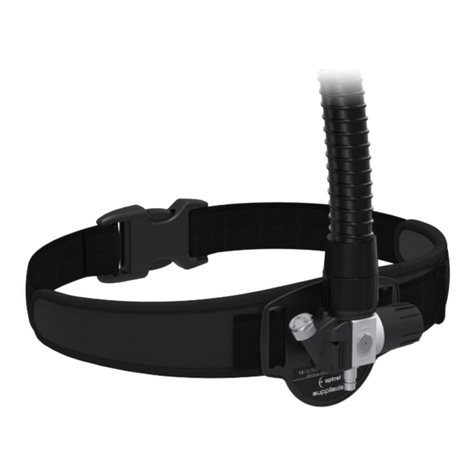
optrel
optrel sippliedair user manual

Covalliero
Covalliero Protecto light BETA Instructions for use
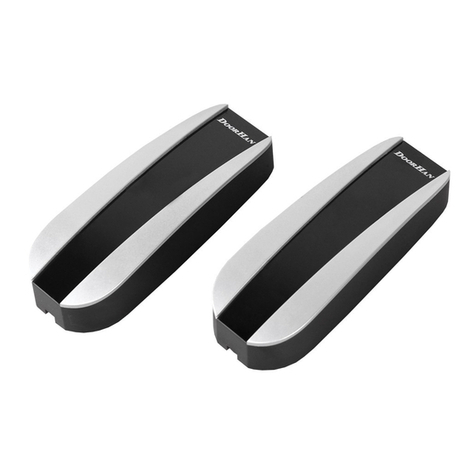
DoorHan
DoorHan PHOTOCEL-N installation manual

Scorpion Power System
Scorpion Power System Scorpion Backup Guard II user guide

Pilz
Pilz PSEN op4H-SL Series operating manual

Showa Denki
Showa Denki CB-1075 Operation manual




